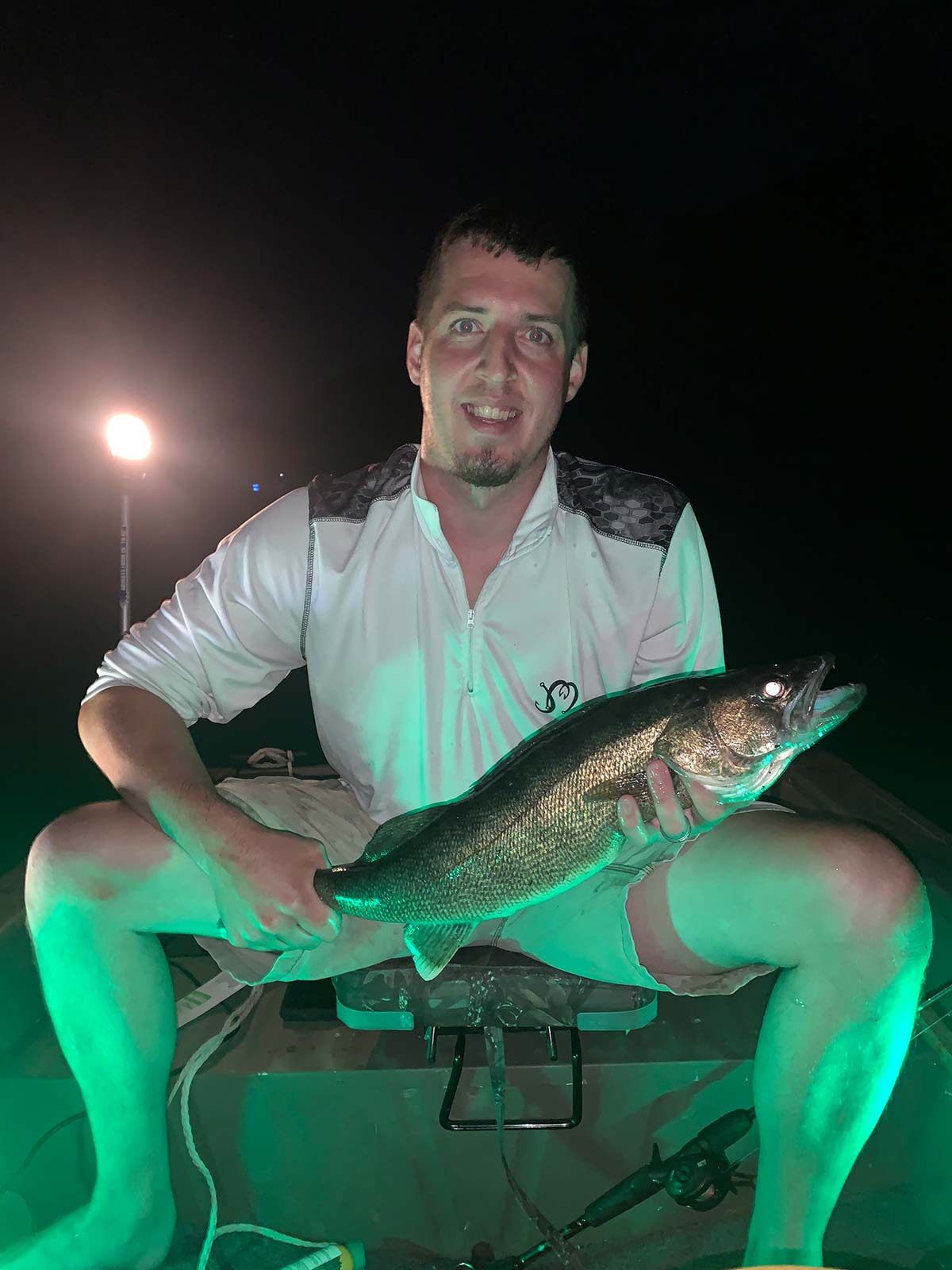
Do it in the dark with summer walleye
Traditionally, walleye are mostly pursued during the colder months especially through the ice. While the spring and fall are known to be killer times of year for them as well, don’t overlook summer nights for some big walters. It’s all about making those necessary adjustments and understanding the behaviors of these fish in order to be successful in your venture.
In the spring walleye come up shallow when they are looking to spawn; in the summer they can be found in a number of places for varying reasons. They may be sitting in oxygen rich weed beds, roaming deep basins or even sitting a bit deeper right off rocky points and structure. Optimal water temperature for walleye is in the mid 60-degree range. When water temps rise above 75 though, the fish aren’t very happy with it, so they like to chase the thermocline. The thermocline is a thermal layer that separates warm surface water and deeper cold water within a lake.
With the water temps being much more stable in this range within the thermocline, the walleye are most comfortable. Obviously there can be some other variables like in most situations such as time of day/night and the weather. Now, again there are other areas of interest to pursue – weed beds can be loaded with forage while at the same time providing these predators with cover to stalk their prey. Also anywhere there may be a river or stream that rolls into a lake. All summer long an area like this can provide relief by even just a few degrees, especially after a good rain.
It should be noted that they prefer low light levels as well, so in clear water lakes the walleye generally hang deeper during the day and will wander in a bit closer to shore at night to feed. If you have a spotlight with you sometimes you can see their eyes reflection in the water. Personally, my favorite way to chase walleye is after dark and down to the thermocline. Walleye have a reflective pigment in their eye called Tapetum Lucidum and it aids them to see better at night. To be honest sometimes the hours with the most activity start at 1 a.m. and carry on from there.
Start off by anchoring up and dropping down a 6,000 lumen submersible green lantern. The reason for the light is that it stimulates zooplankton growth which brings in baitfish. Obviously that will bring in bigger fish that we want. I fish some lakes that have an abundance of alewife as the main forage. Once we draw them in, the walleye follow up. Huge balls of bait swirl on all night, to the point that I’ll sometimes get a glance at a nice walleye darting through the baitball, snatching up a tasty snack. During these events we are able to catch our own bait supply on some size 4-6 Sabiki rigs. So we jig up these baitfish and send them back down to be eaten.
Now I’d like to tell you that it’s this simple but it’s not. Walleye can be a tad picky about some things. Which leads me to my next piece of advice regarding terminal tackle. I like to use 6-pound mono and a small treble or octopus circle such as a #12, though I definitely miss more fish with the octopus circle. I’ve had walleye mouth my bait and slowly wander off instead of really committing to it which results in the ole swing and a miss on my end.
I also place a large split shot about 2 feet up my line to keep the baitfish down near the thermocline and not have it wander off too far. This is mainly because we have out multiple rods and night time tangles aren’t the most enjoyable thing to spend my time on. Drag is always set loose in lieu of a baitrunner so fish can take our presentation without feeling resistance and thus dropping it.
If you’re not finding fish, don’t be afraid to pick up anchor and move to a new spot. I’ve wasted plenty of nights hoping they’d come in. Sometimes they aren’t too far away; it’s just they’re doing something a little different. It is worth a shot because it may help you to figure out another piece to the puzzle.
Walleye are an interesting fish for sure and one of the more frustrating species that I have pursued. If there is one thing that they’ve done for me, it’s that they have made me get outside of my comfort zone to try to figure out new things.



